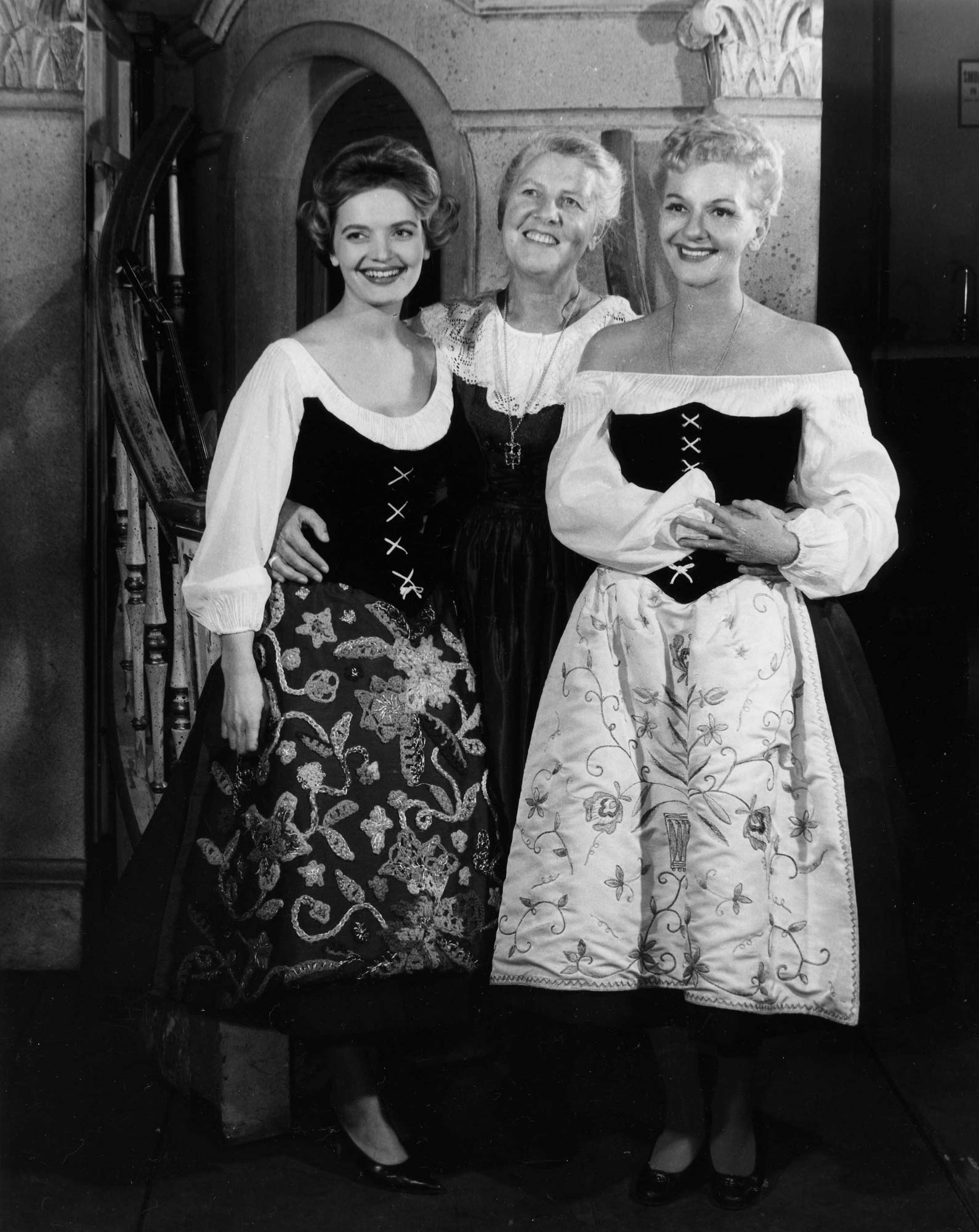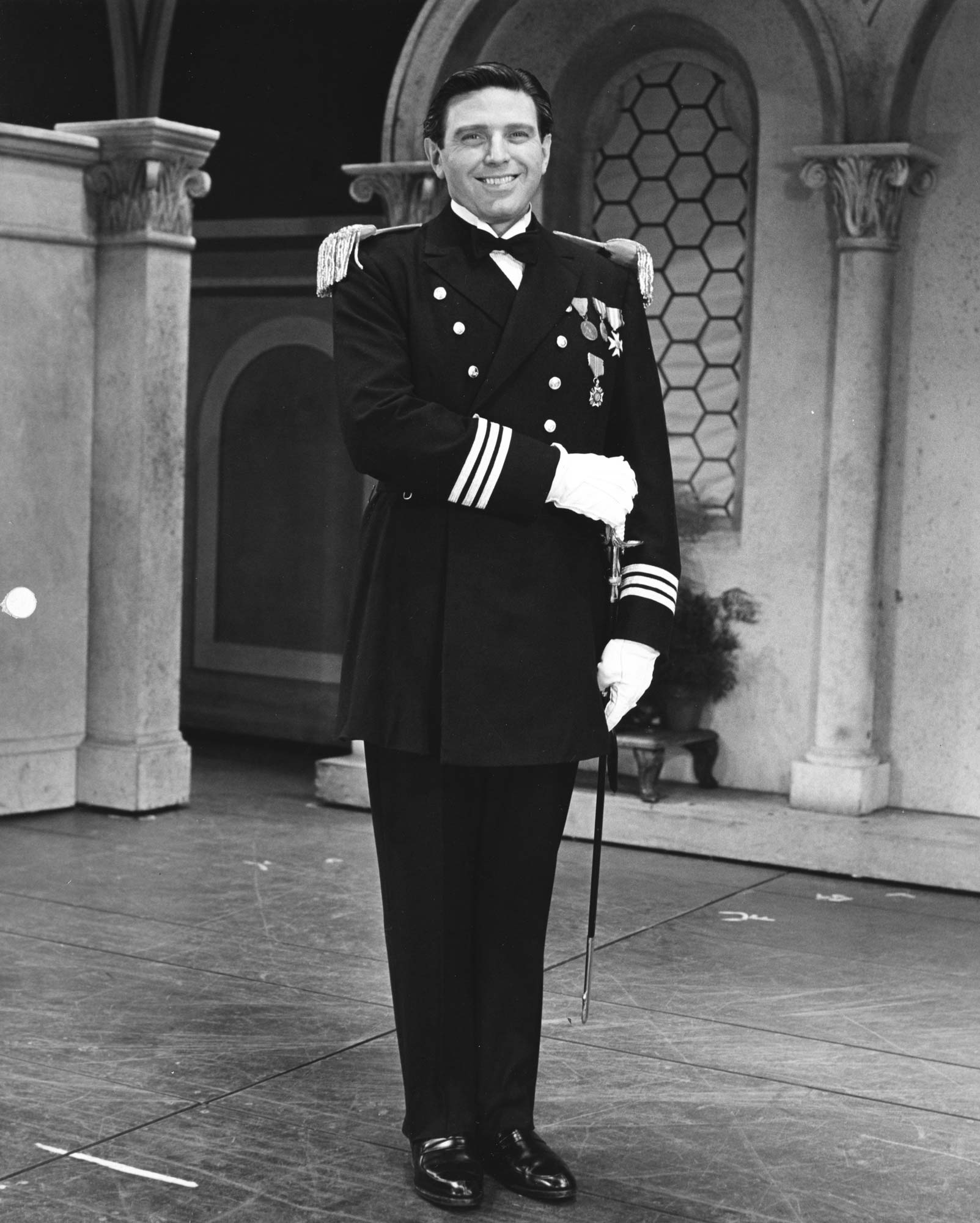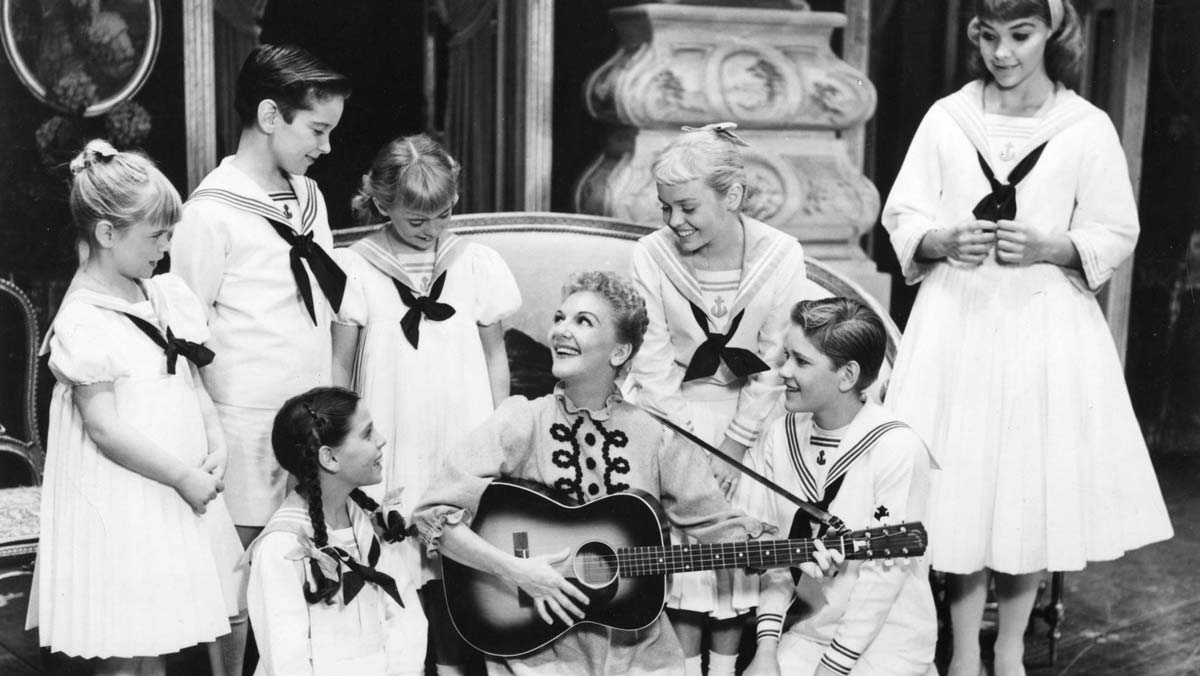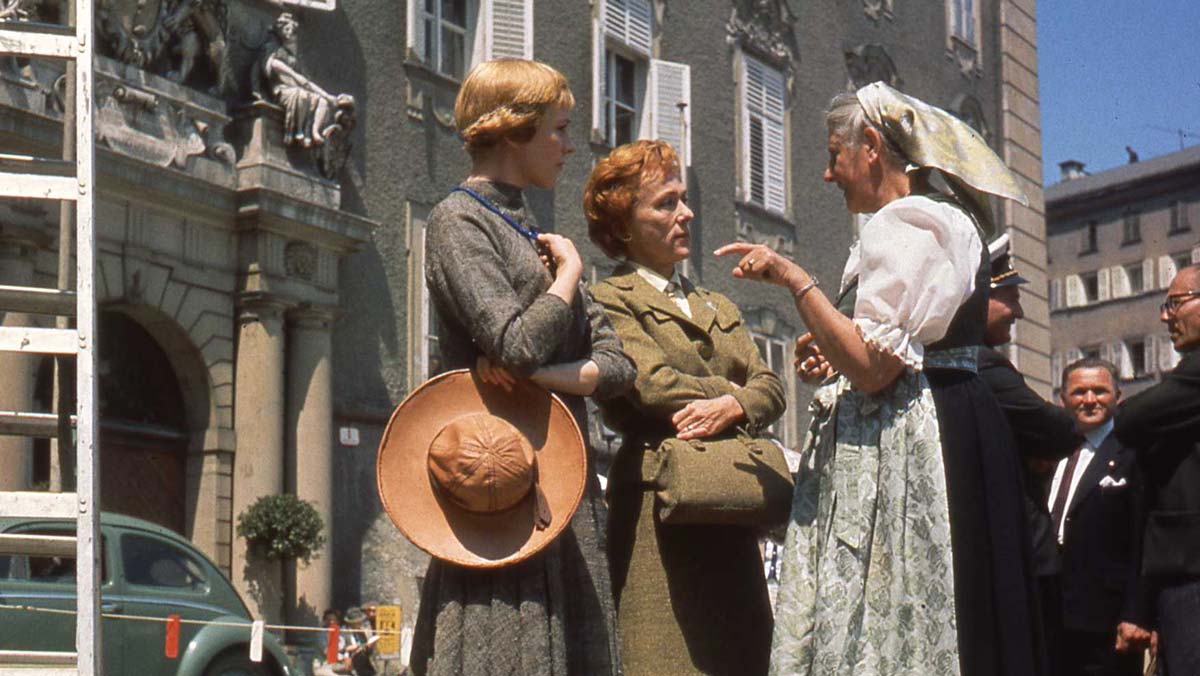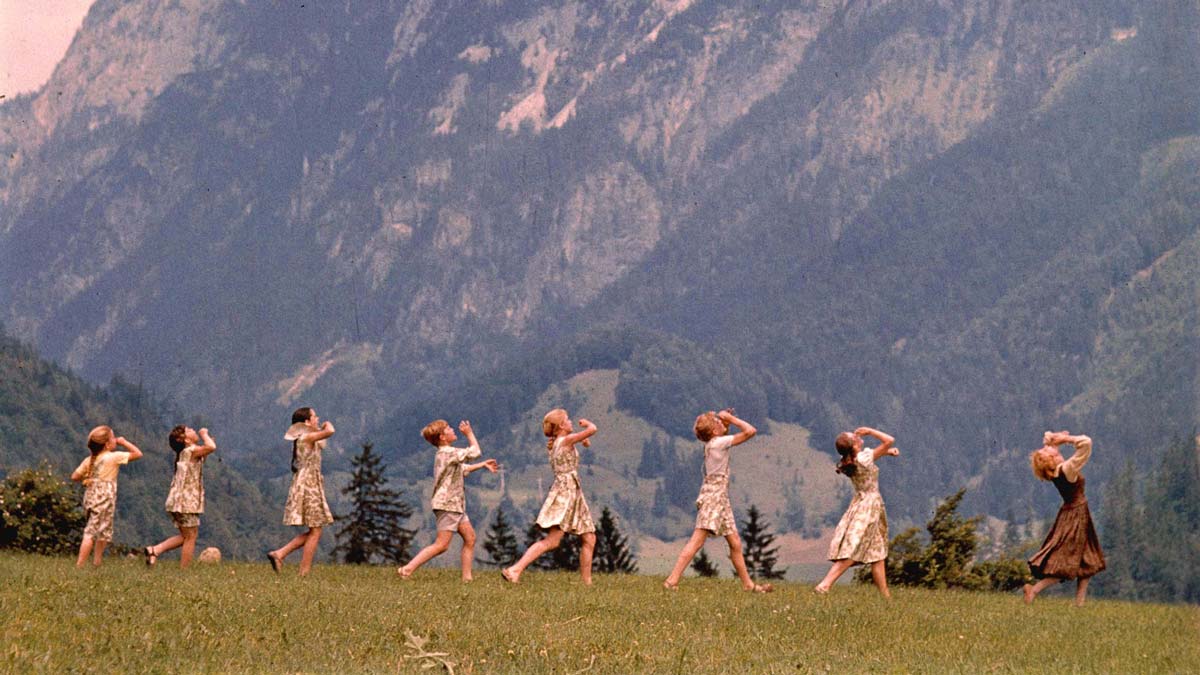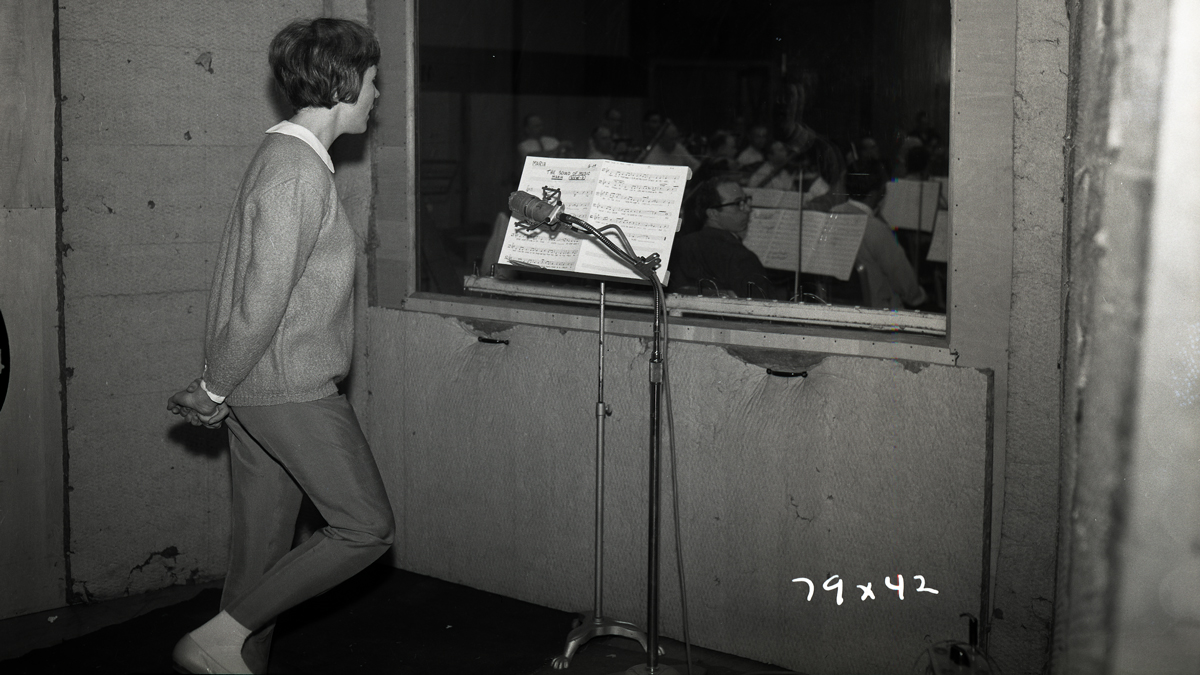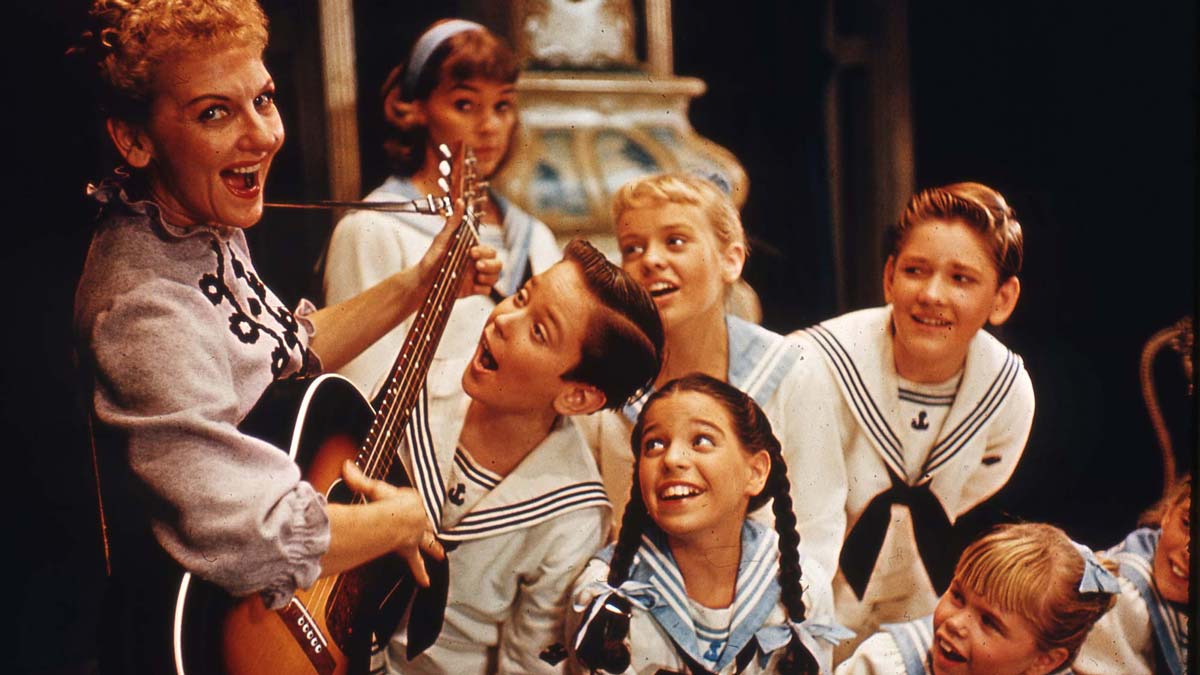FROM THE ALPS TO THE RIALTO: THE SOUND OF MUSIC’S STAGE JOURNEY

When, in the late 1950s, Broadway star Mary Martin was trying to track down Maria Von Trapp for the stage rights to her story, she had no idea that Maria had renounced show business altogether and was performing missionary work in, of all places, the South Pacific.
From the early 1940s on, the Trapp Family Singers were an important and commercially successful singing group touring across America, but by the early 1950s, they were facing a crossroads. Their beloved patriarch, Georg von Trapp, had passed away in 1947; the family had turned their massive Alpine chalet in Vermont into a resort lodge; and Maria’s own memoir, The Trapp Family Singers, although a best-seller on its release in 1948, was fading from view. The family’s musical touring schedule was also getting more selective, and older members of the family were rotating out of the group to pursue their own lives. But one thing that had always made the von Trapps distinct from other vocal groups was the depth of their religious devotion. After an exhausting tour to Australia and New Zealand, Maria began to see that there was a higher purpose in life: “we thought our [performance] work had come to an end, [and then] we began to see a new beginning,” wrote Maria in a second volume of memoirs.
Maria heeded the call of a Catholic charity and disbanded the Trapp Family Singers after their 1955 tour. She, her musical director Father Wasner, and three of the children devoted themselves to good works and became missionaries on the other side of the world on the South Pacific island of New Guinea.
The saga of the Trapp Family Singers might well have ended there, leaving behind as their only cultural legacy a few long-playing albums of their repertoire and some happy memories in the hearts of a few thousand concertgoers. But Mary Martin had a friend and colleague named Vincent J. Donehue, a Tony-winning director who was under contract to Paramount to develop projects for movies and television. One day, Donehue had an appointment to look through various properties owned by Paramount to see if anything might be worth putting into development. He was shown two recent German movies based on Maria von Trapp’s memoirs; Die Trapp Familie and its sequel, Die Trapp Familie in Amerika. Neither movie had been released in America, but they were quite successful in Europe, and Paramount wondered if they were worth turning into an English-language remake, perhaps as a vehicle for Audrey Hepburn. Donehue thought the story of the von Trapps would indeed make an excellent vehicle, but not for Hepburn and not for the movies; he went back to the East Coast and promptly screened the movies for Mary Martin and her manager husband Richard Halliday.
From the early 1940s on, the Trapp Family Singers were an important and commercially successful singing group touring across America, but by the early 1950s, they were facing a crossroads.
Although she had a big triumph onstage (and on television) in the musical version of Peter Pan, by the late 1950s, Martin was sorely in need of a successful project. The zenith of her career had been almost a decade earlier as the heroine of Rodgers & Hammerstein’s groundbreaking look at romance and racial prejudice, South Pacific. The musical was nearly as massive a phenomenon as Oklahoma!, running 1,925 performances and, for her performance in the leading role of Nellie Forbush, Martin was awarded the Tony for Best Actress in a Musical. Martin had known, revered and adored Oscar Hammerstein II since her early Hollywood stint in the 1930s, and South Pacific only cemented her mutual lovefest with Dick and Oscar, as she referred to them. As friends and colleagues, the three were eager to work together again at some point; a stage vehicle for Martin, written by a team as venerated as Rodgers and Hammerstein would be a dream come true.
Martin and Halliday set about trying to contact Maria von Trapp’s agent to make her an offer for the stage rights to her story, but every time Maria and Father Wasner checked in at a major mission station in the South Pacific, there was a letter from two people named Martin and Halliday in America about something called a Broadway show. Maria simply tore up the letters and concentrated on her chosen vocation.
Months later, Maria and Father Wasner returned to the United States by ship and docked in San Francisco. Astonishingly, they were met there by Richard Halliday and were given two tickets to see Mary Martin at the Curran Theater in a touring production of Annie Get Your Gun. Now there’s a change of pace from Papua, New Guinea! Maria was impressed by Martin’s talent, but could no more see Martin playing her than she could picture herself going onstage and singing about target shooting. She confessed to the couple that she had negotiated away the stage and screen rights to the German producers of Die Trapp Familie for the paltry sum of $9,000. She told the Hallidays that they were welcome to give it their best shot, but she herself had more important work to do and returned to the family lodge in Vermont.

There was one final thing that needed fixing: the title. Originally called Love Song, the show was changed to The Sound of Music when Rodgers & Hammerstein’s lawyer found dozens of copyrighted shows bearing the former title and begged them to use something less susceptible to a plagiarism lawsuit.
The Hallidays were extremely close to Broadway producer Leland Hayward, a former agent who had a huge success as a co-producer on South Pacific. The Hallidays presented their dilemma to Hayward; he thought the project was a great idea and happily agreed to coproduce the show. He dispatched his lawyer to Munich to secure the rights, but it took six trips across the Atlantic before a deal could be reached with the German representatives. In a gesture of generosity rare for Broadway producers, Hayward gave Maria von Trapp a small percentage—three-eighths of one percent—of the eventual royalties. With the rights successfully secured, Hayward turned to his next creative challenge: figuring out who would write the show.
Hayward’s choice for writing the script were two gentlemen who had been Broadway fixtures for nearly a quarter of a century: Howard Lindsay and Russel “Buck” Crouse. In 1934, Lindsay, a director and actor, had been handed the plum assignment of staging the latest Cole Porter musical, Anything Goes, a shipboard escapade starring Ethel Merman. It required a hasty rewrite, heavy on the jokes, so Lindsay brought in a friend, Crouse, a show-biz publicist. Lindsay and Crouse continued their partnership, writing a series of musical-comedy librettos such as Red, Hot and Blue and Call Me Madam, and became savvy producers as well, with two of the biggest smash-hit comedies of the 1940s: Life With Father (which they also wrote and in which Lindsay starred) and Arsenic and Old Lace (for which they provided major rewriting). In addition, they became beloved among the Broadway community as first-class pranksters and practical jokers. No one wrote funnier opening-night telegrams than Lindsay and Crouse.
Lindsay and Crouse hardly seemed like natural choices for a devotional play about Austrian folksingers, but Hayward—also their agent—knew they represented the pinnacle of Broadway craftsmanship. When, late in 1957, Hayward decided to reach out to Rodgers & Hammerstein to write an original score, the creative team knew that would be a long time in coming—the songwriters were contracted to start on their next show, Flower Drum Song, which was scheduled to go into rehearsal that September. Rodgers later recounted that Hayward and Lindsay and Crouse said ‘“the most flattering thing in the world—‘If you and Oscar will write the music and lyrics, we will wait.’” And so they did.
This respite gave Lindsay and Crouse nearly a year to break down the epic saga of the Trapp family’s wanderings into something manageable for the musical stage. They made the decision to begin their story at Nonnberg Abbey, where Maria, with her tomboyish ebullience, is quickly revealed to be an impossible fit for the novitiate. Interestingly, their first draft concluded not back at Nonnberg Abbey with the departure of the Trapp family to America, but in America itself, at the immigration station on Ellis Island. Since Hayward had paid for the rights to the second German film (which told of the von Trapps’ American journey) Lindsay and Crouse highlighted the show business aspect of the tale, introducing a fictional American concert manager for the von Trapps, who gets the immigration authorities on Ellis Island to release Maria after they hear how wonderfully she can sing. It is not the promise of America, but rather, the promise of an American stage debut, that provided the dramatic climax for the initial draft of the show.
Other than that excursion to Ellis Island (eventually cut, of course), Lindsay and Crouse hewed essentially to the dramatic arc of Maria’s memoirs, but the stage requires a certain condensation and conflation with any large narrative. The Captain and Maria marry each other late in the dramatic version, and their honeymoon is depicted as nearly simultaneous with the beginning of the Anschluss (the Nazi invasion of Austria) in 1938. In reality, those two events were more than a decade apart. In what was surely a greater affront to the von Trapp family than to Austrian history, however, all of the actual von Trapp children’s names were changed (into rather clichéd and operetta-like names), as well as their ages and their sexes. Also, for the record, Maria Kuschera (her maiden name) herself is renamed—in the show she becomes Maria Rainer, perhaps in a reference to the Austrian-trained movie actress Luise Rainer.
The next task was for the four collaborators to break down the narrative and transform key text passages into songs that could heighten the story and allow it to achieve its maximum dramatic potential. Lindsay and Crouse met constantly with the songwriters, and planned every turn of the musical narrative in collaboration with them. First, however, Rodgers & Hammerstein worked out the routine of the songs—the structure of how musical material would alternate between solos and group numbers, up-tempo songs and ballads—everything to create a satisfying harmony and balance in the show. There were no songwriters better at crafting musical moments out of narrative than Rodgers & Hammerstein. When Lindsay and Crouse came to them with problems in streamlining the story, Rodgers & Hammerstein were able to craft songs to move the narrative along. For example, Rodgers & Hammerstein made one major structural change in Lindsay and Crouse’s second draft. Originally the intermission was to come after Scene Eight, where Maria sneaks off silently from the Captain’s party, guitar and satchel in hand, heartbroken but determined to return to the Abbey. Rodgers & Hammerstein wanted the Act 1 curtain to come down on a song, preferably an uplifting one (it would be “Climb Ev’ry Mountain”), so they asked Lindsay and Crouse to move the Act One curtain one scene later, after Maria returns to the Abbey and is given spiritual advice by the Mother Abbess. “You have to face life, wherever you are,” was the final line that Lindsay and Crouse typed for the Mother Abbess—but in their script, in blue ink, the merry pranksters scrawled underneath, “At this point she also has to face Rodgers and Hammerstein.”
Rodgers & Hammerstein were about to have some spiritual guidance of their own. Hammerstein began a correspondence with a friend of the Hallidays, Sister Gregory, a nun who served as head of the drama department at Rosary College in River Forest, Illinois. The sister became an unofficial technical advisor in Catholic matters and soon became a much-needed spiritual advisor to Hammerstein as well. Sister Gregory’s inspirational letters fed Hammerstein’s expansive soul, and as the collaboration on The Sound of Music grew, his lyrics took on a quality that was more yearning, more compelling, and more spiritually challenging.
One last bit of advice came from someone with even more at stake. Maria von Trapp had read an early draft of the script and had three main concerns: she felt that the character of Maria was not enough of a tomboy and therefore did not undergo enough of a change; second, the Captain was far too Prussian and humorless than her real-life husband. But most important, how could the creators have possibly eliminated Father Wasner, the one person most responsible for the musical direction and professional success of the Trapp Family Singers? Lindsay and Crouse had warned Maria early on that the show could contain either Father Wasner or Mary Martin, but not both—either a priest could teach the children to sing, or the star could. And, on Broadway, the star always gets top billing…
There was one final thing that needed fixing: the title. Originally called Love Song, the show was changed to The Sound of Music when Rodgers & Hammerstein’s lawyer found dozens of copyrighted shows bearing the former title and begged them to use something less susceptible to a plagiarism lawsuit.
By the last week of August 1959—little more than half a year after the collaboration had begun in earnest—the show had been shaped enough to go into rehearsals. Casting had proceeded without incident. Martin, of course, would play Maria and participated in all major casting decisions. The producers and director Vincent Donehue sought New York’s most handsome leading men for the part of Captain von Trapp (including, rumor has it, a Canadian classical actor named Christopher Plummer who was deemed too young). Theodore Bikel was Viennese-born, and, in addition to his acting career, had an impressive sideline as a folk singer; his first audition sold Martin immediately. Rounding out Bikel’s casting as the Captain in two parts invented just for the show were Marion Marlowe as Elsa Schraeder, a worldly, aristocratic love interest for the Captain, and the ever-engaging character actor Kurt Kasznar as Max Detweiler, the cynical impresario who encourages the family to perform at the Salzburg Festival (although that was changed, too—perhaps for reasons of propriety—to the Kaltzberg Festival). On the production side of the team were scenic designer Oliver Smith, costumer Lucinda Ballard, and choreographer Joe Layton, who would be in charge of the many musical staging sequences involving the seven von Trapp children. In the category of “Only on Broadway,” Martin’s simple frocks and dresses would be created by the haute couture designer Mainbocher, a favorite of the actress’. Everything seemed to be, as befits a show featuring a former commander in the Austrian navy, shipshape.
But then, after the third week of rehearsal, Oscar Hammerstein went in for a routine physical and was diagnosed with cancer of the stomach. An operation was immediately scheduled for mid-September. It was partially successful—the carcinoma had been removed, but so had most of Hammerstein’s stomach. Hammerstein could still function, but he would miss both the final run-throughs in New York and the out-of-town engagement in New Haven, Connecticut, in early October. A showbiz trouper since his twenties, it would be the first time that the hands-on Hammerstein would miss the crucial rehearsals and tryouts of a new project. Rodgers, a cancer survivor himself, told Mary Martin, “We are going to work as long as we can.” Lindsay and Crouse cabled to Hammerstein a more characteristic telegram from New Haven: “WE ARE SIXTY, GOING ON 70, YOU CAN DEPEND ON US. HOWARD AND BUCK.”
Despite the absence of Hammerstein, the New Haven tryout went without hitch on the creative front (although Patricia Neway as the Mother Abbess missed a few performances due to illness) and the show garnered the sort of acclaim that usually accompanied a Rodgers & Hammerstein musical at the Shubert Theater. Hammerstein was able to join the company halfway through the two-week Boston engagement and, although still recovering from surgery, he enthusiastically gave notes on the performance and the show. Very little needed to be fixed. One aspect of the second act did, however, need some particular attention. It was felt that the Captain should have a song to express his bittersweet attachment to his homeland. Hammerstein needed to marshal all his energy, so Rodgers took a pass at composing simple folksong first. The final product took a week to finish—and Oscar Hammerstein crafted the lyrics to the last full song he would ever write: “Edelweiss.”
Although most of the Boston reviews were raves, the astute local critic Elliot Norton had set the creative team on edge with his cavils about the show’s “silliness, stiffness and corny operetta falseness of the script.” Still, none of this mattered to the opening night crowd at Broadway’s Lunt-Fontanne Theater on November 16, 1959. The show had cost $480,000—a not insignificant sum back then—but it also had a $2,320,000 advance sale, a record for its time; a new Rodgers & Hammerstein musical was still one of the most anticipated evenings on Broadway.
When Mary Martin came forward to take her curtain call on opening night, a formidable gray-haired woman in a green satin dress stood up immediately and applauded. Martin was not shocked—the same woman had stood up at precisely the same moment during the opening nights in New Haven and Boston. And why shouldn’t she? After all, The Sound of Music was the story of the woman in the green dress. And, as the previous two-and-a-half hours made abundantly clear, no one could tell Maria von Trapp what to do.
Laurence Maslon is the author of The Sound of Music Companion as well as Broadway to Main Street: How Show Tunes Enchanted America. He also is the host of the weekly broadcast/podcast “Broadway to Main Street” on the NPR affiliate WLIW-FM.

